Rumtek monastery
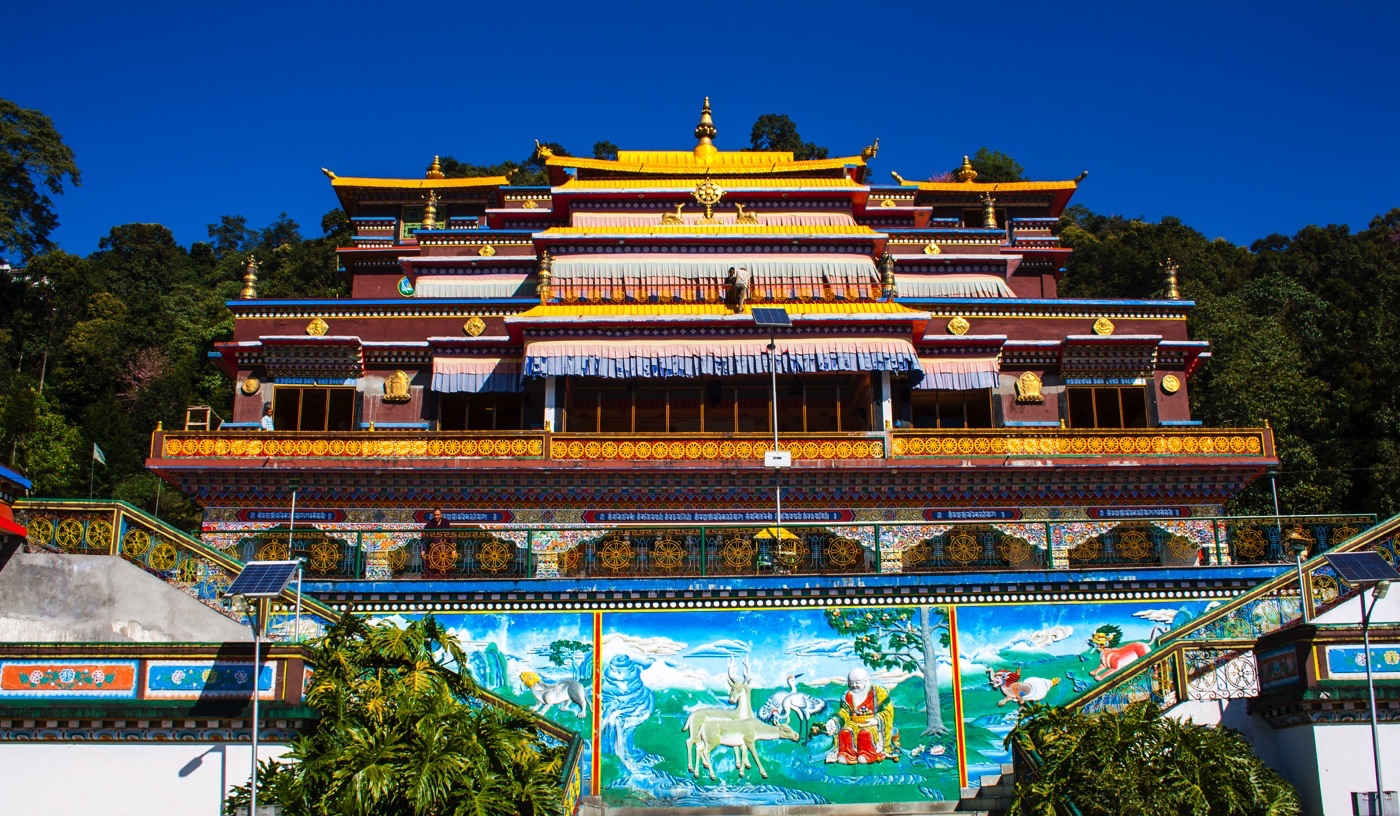

High in the Himalayas, nestled between Tibet, Bhutan, and Nepal and is the north eastern Indian state of Sikkim.
Sikkim was a small independent Buddhist kingdom until the 1970s, after which it became a state of India. Buddhism still plays an important role in the life of the state (the state motto is Conqueror of the Three Worlds, the name of a protective Buddha aspect). The largest Buddhist monastery in Sikkim is Rumtek monastery, which is the main seat-in-exile of Thaye Dorje, His Holiness the 17th Gyalwa Karmapa.
Wangchuk Dorje, the 9th Karmapa, founded the original Rumtek monastery in 1734 with the patronage of the king, the fourth Chogyal Gyurmed Namgyal. It was then, and is today, the seat of the Kagyu tradition in Sikkim.
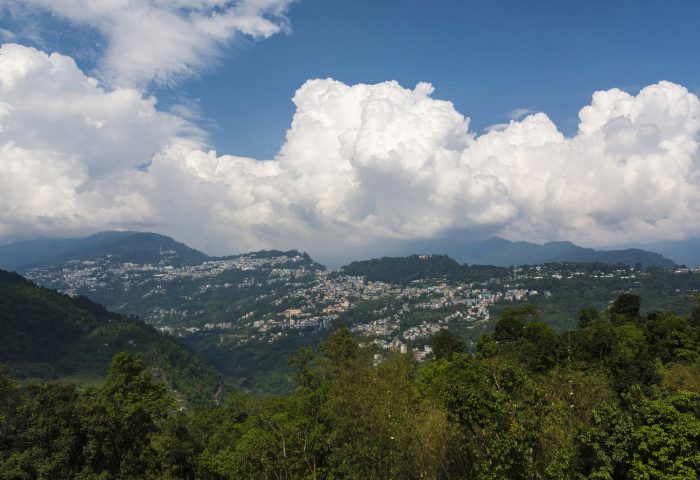
View of the capital of Sikkim, Gangtok, from Rumtek Monastery.
By 1956, the monastery was almost in ruins. When Rangjung Rigpe Dorje, His Holiness the 16th Gyalwa Karmapa, visited Sikkim on pilgrimage, lamas from Rumtek asked him to visit the monastery. Karmapa replied that he would come later, but the time was not yet right. Three years later, the 16th Karmapa, along with Mipham Chokyi Lodro, His Holiness the 14th Kunzig Shamar Rinpoche, had to escape from China and leave Tibet. They were welcomed in Bhutan, before being invited to Sikkim.
The 16th Karmapa was offered several sites in the kingdom to establish a new seat in exile, by the Maharaja, Sir Tashi Namgyal. He chose Rumtek because it possessed all of the auspicious attributes needed for the seat of activity of a Karmapa: seven streams flowing towards it, seven hills facing it, a mountain behind, snow ranges in front, and a river below, spiralling downhill like the form of a conch-shell.
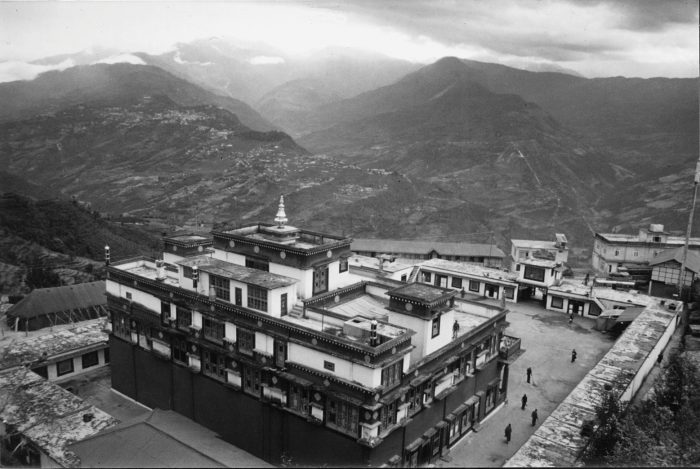
The view from Rumtek monastery
Carving a monastery complex from the raw jungle was a difficult task, only possible through immense assistance and dedication. The Maharaja of Sikkim gifted seventy-four acres of land at the Rumtek site to the 16th Karmapa. The Prime Minister of India, Pandit Jawaharlal Nehru, promised free food and clothing for the people working there. The government of Sikkim donated funds for the provision of a road, electricity, water, and other necessities. The government of India gave grants for a meditation hall, living quarters, and medical aid. The general public also gave generously, even though no appeal had been made.
After four years of construction work, Rumtek monastery, designed in the traditional Tibetan style, was completed. Precious relics, texts and statues that the 16th Karmapa’s party had managed to save from Tibet, including the entire 108-volume canon of the Buddha’s teachings, were installed, and the 16th Karmapa himself took up residence in 1966.
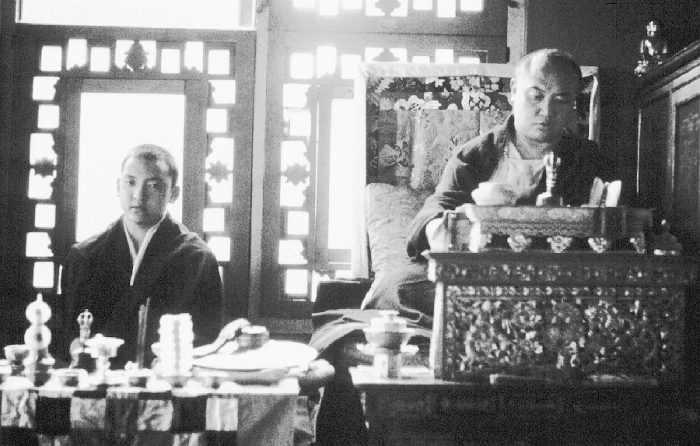
His Holiness the 16th Gyalwa Karmapa (right) with His Holiness the 14th Shamar Rinpoche (left), performing a ceremony at Rumtek monastery
The 16th Karmapa was fond of birds, and the complex at Rumtek included an aviary, as well as a temple, school, several stupas, a retreat for monks to meditate, and other buildings. After the 16th Karmapa passed away in 1981, his relics were interred in a golden stupa at the site.
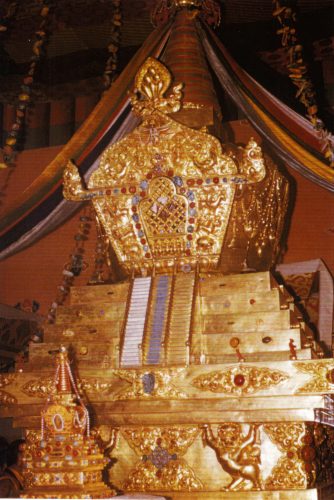
Reliquary stupa of the 16th Karmapa in Rumtek monastery
The original monastery, a short distance away from the new one, has recently been rebuilt with assistance from the Sikkimese government.
Follow Karmapa on social media